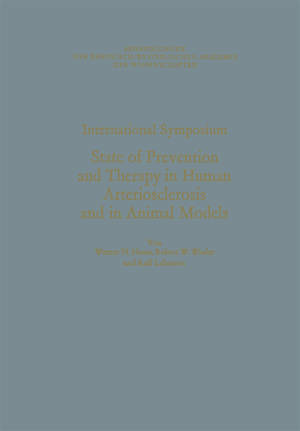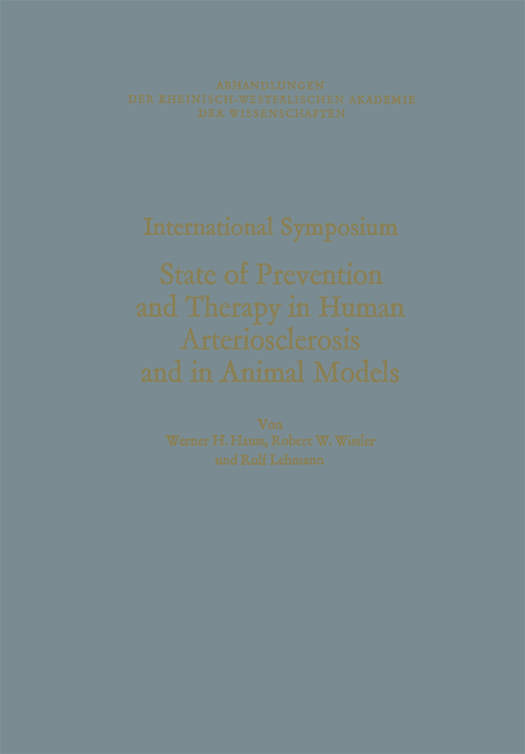
- Afhalen na 1 uur in een winkel met voorraad
- Gratis thuislevering in België vanaf € 30
- Ruim aanbod met 7 miljoen producten
- Afhalen na 1 uur in een winkel met voorraad
- Gratis thuislevering in België vanaf € 30
- Ruim aanbod met 7 miljoen producten
Zoeken
International Symposium: State of Prevention and Therapy in Human Arteriosclerosis and in Animal Models
Unter Der Schirmherrschaft Der Rheinisch-Westfälischen Akademie Der Wissenschaften
Werner H Hauss
€ 54,45
+ 108 punten
Omschrijving
It is suggested that the stenosing effects of atherosclerosis may be offset by regression of the lesion, senescent dilatation of the arterial wall and by enlargement of anastomotic channels. Regression is slow and such inertia is attributed to: absence of cholesterol catabolic enzymes; disproportion of the ratio of LDLlHDL; physical inaccessibility of crystalline cholesterol; and relative absence of reticuloendothelial phagocytes. Moderate dilatation of the human coronary arterial wall with advancing age seems to compen- sate for the inward encroachment of atherosclerosis on the lumen, hence the status quo ante may be preserved. Severe atrophy with gross dilatation (ectasia) leads to haemodynamic difficulties with slow circulation as a result of marked fall in perfusion pressure. Such overdilated ectatic coronary arteries are particularly liable to undergo thrombosis. References Adams, C. W. M., and Bayliss, O. B. (1976a): Detection of macrophages in atherosclerotic lesions with cytoduome oxidase. Brit. J. Exp. Pathol. 57, 30 to 36. Adams, C. W. M., and Bayliss, O. B. (1976b): Succinic dehydrogenase and cytochrome oxidase in arterial, venous and other smooth muscle. Atherosclerosis 23, 367 to 370. Adams, C. W. M., Knox, J., and Morgan, R. S. (1975a): The resorption rate of atheroma lipids in situ and implanted subcutaneously. Atherosclerosis 22, 79 to 90. Adams, C. W. M., Morgan, R. S., and Bayliss, o. B. (1973): No regression of atheroma over one year in rabbits previously fed a cholesterol or enriched diet. Atherosclerosis 18, 429 to 444.
Specificaties
Betrokkenen
- Auteur(s):
- Uitgeverij:
Inhoud
- Aantal bladzijden:
- 575
- Taal:
- Duits
- Reeks:
Eigenschappen
- Productcode (EAN):
- 9783531050775
- Verschijningsdatum:
- 1/01/1978
- Uitvoering:
- Paperback
- Formaat:
- Trade paperback (VS)
- Afmetingen:
- 170 mm x 244 mm
- Gewicht:
- 934 g

Alleen bij Standaard Boekhandel
+ 108 punten op je klantenkaart van Standaard Boekhandel
Beoordelingen
We publiceren alleen reviews die voldoen aan de voorwaarden voor reviews. Bekijk onze voorwaarden voor reviews.











